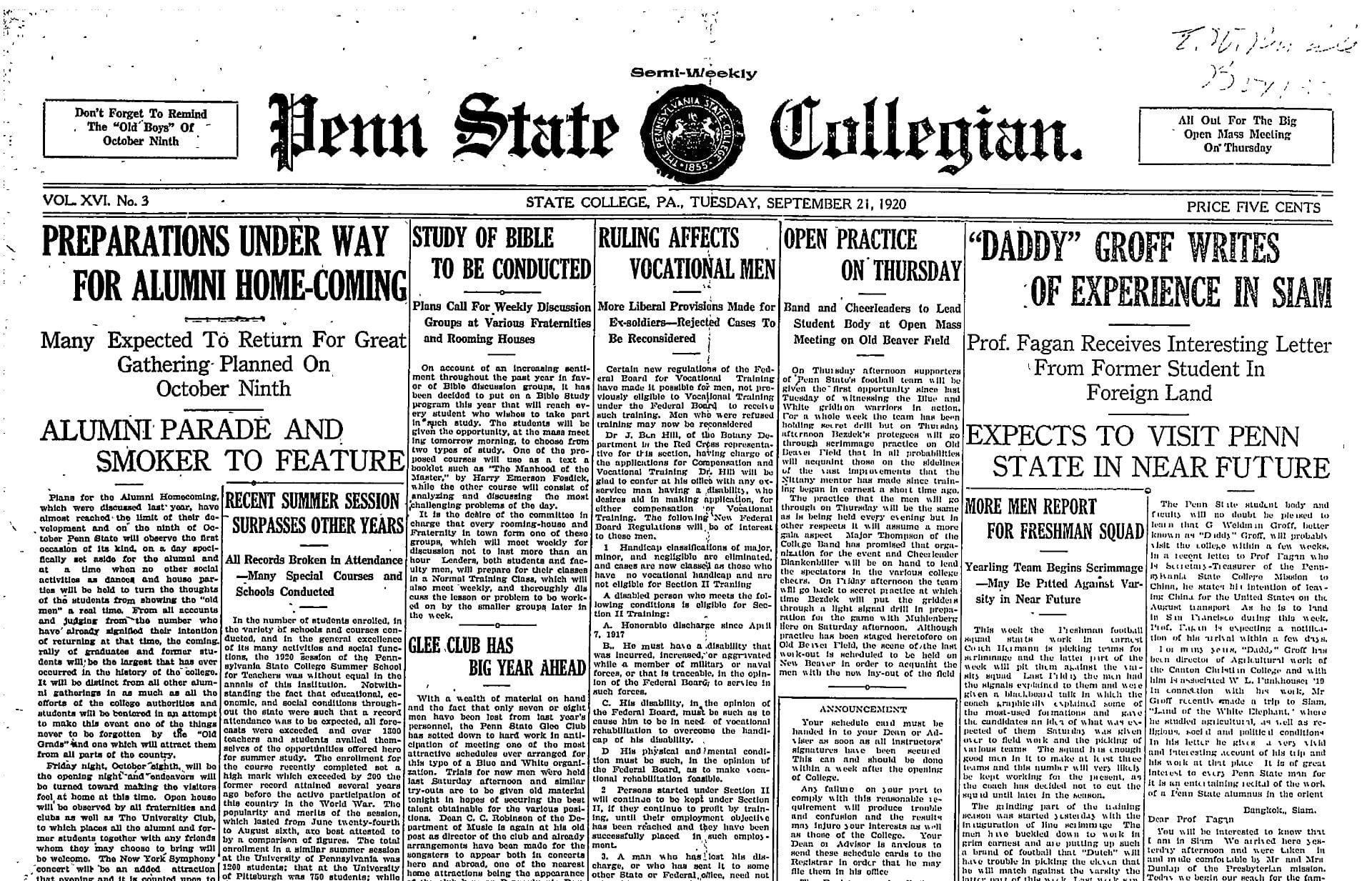Origins of Advocacy: Veterans (1920-1969)
Federal programs created to aid people with disabilities started after World War I in an effort to support rehabilitation of disabled veterans in the workforce. Signed into law by President Woodrow Wilson on June 2, 1920, the Smith-Fess Act (also known as the Civilian Vocational Rehabilitation Act) established the Vocational Rehabilitation program for Americans with physical disabilities. The Penn State Collegian reported that veterans who had been previously denied return to work or vocational training because of their disability could reapply to receive job placement services and training in agriculture and industry.
Assistance and rehabilitation programs continued to largely focus on military veterans into the mid-20th century. In 1963 Penn State Hazleton’s Highacres reported that World War II veterans could receive financial assistance from the US Department of Veterans Affairs for tuition, book, and housing.
“Ruling Affects Vocational Men,” Penn State Collegian, September 21, 1920
“Information for Handicapped Veterans,” Highacres Collegian, January 28, 1963
Featured image: WWI/Parades/Peace Parade, Photographic vertical files: Events, 01179


